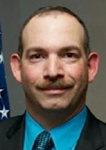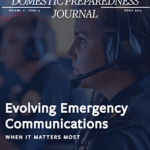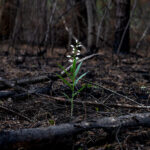Uncrewed vehicles have many forms: uncrewed aerial vehicles (UAVs), uncrewed ground vehicles (UGVs), and uncrewed maritime vehicles (UMVs). They are autonomous or remotely controlled machines designed to perform tasks without human operators’ direct involvement. They have evolved rapidly in emergency management, humanitarian relief, and disaster response. These vehicles offer advantages such as enhanced data collection, accessibility to remote or hazardous areas, and increased operational efficiency, making them valuable assets in addressing all hazards and managing emergencies.
Benefits During Disaster Response
Search-and-rescue operations widely use UAVs for earthquake responses, floods, and other natural disasters. UAVs with cameras and thermal sensors can quickly survey disaster-stricken areas, locate survivors, and identify hazards or blocked pathways for rescue teams. UAVs create high-resolution maps of disaster-affected regions, providing real-time data on the damage extent and helping authorities plan and allocate resources more effectively. Drones can function as flying communication relays in areas with a disrupted conventional communication infrastructure, facilitating coordination among rescue teams and affected communities.
Uncrewed vehicles provide humanitarian relief in remote or inaccessible regions to transport medical supplies, vaccines, and essential medications to disaster-stricken areas, ensuring timely aid to those in need. UAVs can assess the structural integrity of critical infrastructure, such as bridges and buildings, following disasters, guiding engineers and responders in prioritizing repair and reconstruction efforts.
For disaster response, UGVs can navigate challenging terrains to deliver food and clean water to affected populations in disaster zones, especially where traditional transportation is unavailable. With specialized sensors and manipulators, these vehicles can manage hazardous materials in chemical spills or nuclear accidents, minimizing human exposure to danger. Uncrewed vehicles can collect data on environmental conditions, air quality, and pollutant levels, aiding in disaster impact assessment and response planning.
Examples of Uncrewed Vehicle Applications
These are four examples of successful implementation of uncrewed vehicles being used to respond to natural disasters:
- Following the devastating earthquake in Nepal in 2015, UAVs surveyed the affected areas, assessed the damage, and created detailed maps to assist rescue and recovery efforts.
- In response to Hurricane Harvey’s aftermath in 2017, the Federal Aviation Administration authorized UAVs to support damage assessment, search-and-rescue operations, and infrastructure inspection.
- During the 2018 Kerala floods in India, UAVs aided in locating stranded individuals, assessing flood levels, and mapping areas to distribute relief materials effectively.
- Australia has extensively used UAVs equipped with infrared cameras to monitor the spread of wildfires, track hotspots, and assess fire damage.
In conclusion, uncrewed vehicles have become valuable tools in emergency management, humanitarian relief, and disaster response efforts. With their ability to collect real-time data, navigate challenging terrains, and perform tasks that might be dangerous for human responders, these vehicles significantly enhance the efficiency and effectiveness of hazardous emergency operations. As technology advances and regulations evolve, integrating uncrewed vehicles in disaster management will save lives and improve response capabilities.
Links to other articles in this series:
Part 1 – Information and Communication
Part 2 – Uncrewed Vehicles
Part 3 – Artificial Intelligence and Machine Learning
Part 4 – Robotics and Automation
Part 5 – Legal and Privacy Concerns

Ian Pleet
Ian Pleet is committed and dedicated to serving as an outstanding example of an emergency management professional with over thirty years of hands-on expertise. He is widely recognized as an adept manager of high-risk emergencies, with a strong focus on addressing chemical, biological, radiological, nuclear, and explosive threats (CBRNE), as well as weapons of mass destruction (WMD) and infectious diseases. His record of accomplishment is marked by the successful design and execution of exercises, delivering adult education using high-fidelity simulations, and establishing effective incident management systems during emergency responses. Moreover, Mr. Pleet is renowned for his ability to advocate policy and oversee program reviews, and he is considered an authority in risk management. He plays an active role in emergency management as an instructor for emergency management and incident command courses, contributing to industry publications and providing technical oversight for textbooks before publication. He is a pro-board-certified fire officer IV, FEMA Professional Continuity Practitioner, and DoD Antiterrorism Officer.
- Ian Pleethttps://domesticpreparedness.com/author/ian-pleet
- Ian Pleethttps://domesticpreparedness.com/author/ian-pleet
- Ian Pleethttps://domesticpreparedness.com/author/ian-pleet
- Ian Pleethttps://domesticpreparedness.com/author/ian-pleet






